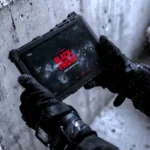Life Trajectory Control (CIA)
The covert operative’s method of designing, planning, and living strategically as a civilian for everyday life – as if it were an ongoing mission.
A life without a mission drifts, and drift is the quiet adversary most civilians never detect. Pick an objective, study the terrain, and the fog clears fast. Treat every decision like it signals something about your future. Patterns don’t lie, and they don’t forgive neglect.
A civilian may never step into a foreign alley at midnight or navigate a terrorist compound, but the pressures they face can be just as relentless in slow motion. Life demands clarity, patience, and calculated action. Most people move through their days reacting rather than directing. They follow routines without questioning where those routines lead. That’s how a person loses years without realizing anything slipped.
Operatives don’t live that way, we build our path with intent. When you treat your life like an extended mission, you start seeing patterns others miss. You evaluate people, environments, and opportunities the same way you’d evaluate assets, safe houses, and routes. You understand that every choice signals something. Every delay compounds risk. Every action moves you closer to an objective or farther from it.
Life Trajectory Control applies that mindset to civilian living. It’s about discipline, situational awareness, and structured advancement. The same tradecraft used to run intelligence operations can shape a stable, effective civilian future. You define the mission. You set the tempo. You build the alliances, identify threats, track your own behavior, and move with purpose instead of chance.
This guide isn’t for someone who wants life to “work out on its own”, it’s for someone who wants to engineer outcomes. It’s for someone who understands that direction is chosen and reinforced, not stumbled into. When you operate with a clear mission profile, life stops feeling like a fog of uncertainty and starts feeling like a controlled progression.

Intel Table of Contents
I. Mission Framing
Before an operative enters any environment, he builds the mission picture with slow, deliberate thought. Civilians skip this step and hope momentum carries them somewhere useful. That’s why many drift for years. A mission frame forces you to look at your life the same way you’d look at an operation – defined intent, known terrain, and clear boundaries that guide every move.
Treat your objective like a classified tasking – precise, limited, and measurable. If you can’t state it in one clean sentence, you don’t own it yet. Clarity speeds every later decision.
Method
• Identify the objective in direct language. No fluff, no wishful thinking.
• Break the objective into measurable checkpoints so you can track progress.
• Map the terrain you’ll operate in – industry, location, money, personal limits, future constraints.
• Determine the skills you lack and the training you’ll need to compensate.
• Mark the likely obstacles and people who might slow you down.
• Set operational windows – when you expect progress and when you’ll reassess.
• Decide what “mission failure” would look like so you can detect drift early.
• Establish what resources you’re willing to spend – time, energy, money, attention.
• Check that the mission supports your long-range direction, not just a short thrill.
• Write the mission profile down. Operatives document so they can execute with clarity.
A strong mission frame becomes the compass for the rest of your life planning. It keeps you from reacting to noise and pushes you to act with the same discipline you’d use in the field. When the frame is clear, every later decision (big or small) moves with purpose instead of impulse.
Your habits are either assets or liabilities. Track them like they’re surveillance targets.
II. Target Intelligence
Before an operative acts, he studies the environment until the picture stops moving. Civilians jump into decisions blind, then wonder why they hit walls. Target intelligence is about stripping away assumptions and collecting ground truth. When you treat your goals like targets, you stop guessing and start planning with accuracy.
Verify every assumption with small probes instead of big commitments. A controlled test reveals more truth than hours of thinking. Never rely on what you hope is real, confirm it.
Steps
• Identify the exact opportunities tied to your mission, not the ones that only look attractive.
• Map the human terrain – allies, mentors, gatekeepers, rivals, and passive bystanders.
• Study the habits of people who’ve already succeeded in your lane – extract their patterns.
• Document blind spots you’ve ignored – skill gaps, emotional triggers, or bad timing.
• Analyze the environment for long-term changes that may affect your moves later.
• Track the risks that can disrupt momentum – financial, social, health, or psychological.
• Examine the expectations of people around you – some will support, others will hinder.
• Collect signals from your own life – performance trends, behavioral drift, weak routines.
• Evaluate the cost of each opportunity before committing resources.
• Verify your assumptions through small tests, not big leaps.
A civilian who gathers intelligence with discipline gains clarity that most people never achieve. When the picture is complete, you move with the same confidence an operative uses in hostile territory – steady, informed, and ready for whatever shifts next.
Redirection isn’t failure. It’s intelligence applied to shifting conditions.
III. Build Your Cover and Network
An operative survives by managing identity and relationships with precision. Civilians do the same, though most never recognize the mechanics behind it. Your cover, how you present yourself – and your network, who you keep close – shape your opportunities more than talent or luck. Treat both as strategic assets. When you control your identity and connections with intent, you create optionality that others cannot see.
Your cover should be simple enough to maintain under pressure. Build relationships that add capability, not noise. People who respect your discipline become long-term assets.
Principles
• Define the civilian cover you’ll operate under – the reputation, behaviors, and skills people associate with you.
• Keep your presentation consistent – mixed signals weaken credibility and slow advancement.
• Identify which parts of your story to reveal, and which to keep compartmented for safety and leverage.
• Build a network tied to your mission, not your comfort zone. You need people who open doors, not people who keep you entertained.
• Maintain at least three categories of contacts – mentors, peers, and rising operators who’ll be useful later.
• Use periodic check-ins to stay present in people’s minds – silence erodes influence faster than failure.
• Strengthen relationships by offering value before you ask for anything. Reciprocity builds faster than charm.
• Track who drains your energy and who enhances your direction – adjust access accordingly.
• Keep a few strategic allies outside your immediate environment – external perspectives prevent tunnel vision.
• Build redundancy. Never rely on one person for information, support, or opportunity.
A clean cover and a strong network give you operational reach. Civilians who ignore this move alone and burn out early. When you handle identity and alliances with the discipline of tradecraft, you gain mobility, protection, and leverage – critical advantages in any long life mission.
If you can predict your own behavior, you can control your trajectory.
IV. Operational Planning
An operative never enters a zone without a structured plan that can survive contact with reality. Civilians plan loosely, then wonder why progress stalls or collapses under pressure. Operational planning forces you to turn long-range intent into actionable steps. You break the mission into clear stages, assign resources, and build contingencies so you’re never caught flat-footed.
Plan in short, repeatable cycles so the mission never drifts into fantasy. Revisions are adaptations to improve, not weakness. A plan that adjusts fast outperforms a perfect plan that freezes.
Tools
• Translate your main objective into smaller operational phases with clear outcomes.
• Set quarterly goals that define where you expect to be and what will verify success.
• Establish weekly priorities tied directly to mission milestones – avoid tasks that don’t advance the objective.
• Build daily actions that are simple, repeatable, and resistant to excuses.
• Create a resource sheet – time blocks, budget limits, training needs, and personnel support.
• Identify friction points – where time, emotion, or environment will likely disrupt progress.
• Prepare contingency paths for each phase so you can pivot fast without losing direction.
• Assess which tasks should be executed solo and which require external help.
• Track your operational pace – too fast burns you out, too slow causes drift.
• Reassess the whole plan after every major checkpoint so you can refine the next phase.
A solid plan doesn’t guarantee smooth execution, but it gives you structure strong enough to withstand chaos. Civilians who plan like operatives stay ahead of problems and maintain forward motion while others freeze. When your life mission is broken into manageable phases, you move with control, not hope.
Adaptation is the closest thing to insurance an operative ever gets.
V. Surveillance on Self
An operative monitors the environment, but he also monitors himself with the same scrutiny. Civilians avoid this because honest self-assessment feels uncomfortable, but without it, they repeat the same patterns for years. Surveillance of the self means gathering objective intel on your behavior, your reactions, and your momentum. When you watch your own pattern with the same focus you’d use in the field, you stop drifting and start adjusting with precision.
Audit your actions the way you’d review surveillance footage – quiet, objective, and unfiltered. Patterns appear quickly once you stop defending them. Adjust early, before they solidify.
Methods
• Track daily actions tied to your mission – record what was completed and what stalled.
• Log emotional reactions that disrupt productivity so you can predict when you’re prone to slip.
• Review progress weekly and identify recurring weaknesses that appear in your routine.
• Use monthly assessments to compare intended direction with actual movement.
• Monitor the people who influence your behavior – notice who sharpens you and who slows you down.
• Document situations where you lose discipline, and determine if it’s environment, timing, or fatigue.
• Evaluate your physical readiness (sleep, nutrition, strength, focus) since all affect execution.
• Test your assumptions regularly – verify which strategies work and which only feel productive.
• Identify blind spots by asking trusted allies for honest feedback.
• Analyze when you drift off-mission and build small countermeasures to correct it fast.
Self-surveillance isn’t self-criticism. It’s controlled awareness. Operatives who monitor their internal state stay effective under pressure, and civilians who apply the same habit gain an advantage most never develop. When you can read your own pattern, you can shape it – and that gives you real control over your trajectory.
Most failures start with small compromises. Catch them early.
VI. Counterintelligence Against Your Weaknesses
An operative expects threats from the outside, but the ones that hit the hardest often come from within. Civilians underestimate this because their sabotage is subtle – wasted hours, emotional impulses, bad routines, or choosing comfort over progress. Counterintelligence isn’t just about spotting external hostile actors, but exposing the internal patterns that pull you off mission. When you treat your weaknesses like active threats, you learn to contain them before they undermine your direction.
Your internal threats leave traces, study them like hostile signatures. Identify when they strike and set barriers to block access. Neutralization is easier than repair.
Actions
• Identify behaviors that consistently disrupt progress – procrastination, avoidance, emotional swings, or poor discipline.
• Analyze when these behaviors strike – timing reveals patterns that you can predict and counter.
• Track environments that weaken your resolve – specific places, people, or digital traps.
• Build physical and digital barriers around the habits that drain time or attention.
• Replace destructive routines with practical alternatives you can execute under stress.
• Recognize emotional triggers that lead to impulsive decisions – name them so you can neutralize them.
• Establish a “red-line list” of actions you refuse to take because they always lead to setbacks.
• Recruit one or two allies who can call out your blind spots with honesty.
• Monitor your energy cycles so you can schedule demanding work when your mind is strongest.
• Audit your progress every two weeks to detect early signs of drift.
Internal threats rarely announce themselves. They creep in through comfort, habit, and rationalization. Civilians who ignore this lose years without noticing the leak. When you run counterintelligence on yourself with operative discipline, you stay ahead of your own weaknesses and protect the mission before it’s compromised.
Adaptation keeps you moving when the original plan collapses.
VII. Execute With Discipline
Planning means nothing if you can’t move when it counts. An operative understands this better than anyone. You can build perfect strategies, map every variable, and rehearse every scenario, but the mission only advances when you execute with consistency. Civilians often wait for motivation, inspiration, or better timing. An operative moves anyway. Discipline is the engine that turns direction into results.
Build systems that force action even when motivation collapses. When the routine carries you, discipline becomes automatic. The mission advances whether you feel sharp or not.
Rules
• Take small, clear actions every day to maintain momentum, even on low-energy days.
• Prioritize tasks that push you toward your mission rather than tasks that only feel productive.
• Keep communication lines open with allies who support your direction and hold you accountable.
• Set strict time windows for work to prevent drift and indecision.
• Break large tasks into small targets so you avoid stall-outs caused by overwhelm.
• Remove unnecessary decisions by preparing routines and checklists in advance.
• Track your execution rate weekly so you can measure actual movement rather than imagined progress.
• Adjust tactics quickly when you hit friction – don’t abandon the mission because one path was blocked.
• Use fast recovery cycles after setbacks instead of waiting for perfect conditions to return.
• Protect your focus by controlling your environment – minimize noise, distractions, and people who interrupt your pace.
Execution defines whether a mission succeeds or dies on the table. Civilians who practice disciplined action move with a confidence most people never reach. When your behavior aligns with your objective every day, you stop relying on chance and start shaping outcomes with the same steadiness an operative brings into the field.
Move with intention, and the path organizes itself around you.
VIII. Adaptation and Redirection
An operative never expects the original plan to survive unchanged. The field shifts, people shift, opportunities collapse, and new ones appear without warning. Civilians often freeze when this happens because they treat their plan like a fixed path instead of a flexible route. Adaptation and redirection mean adjusting your tactics without losing your mission. When you respond to change with clarity instead of emotion, you keep control while everyone else scrambles.
Shift tactics before the situation forces you to. Early adjustment preserves momentum and reduces losses. Flexibility is controlled recalibration, which is “better” than improvisation.
Approach
• Monitor new intel (changes in work, relationships, finances, or personal capability) and assess how each shift affects your trajectory.
• Update your operational plan when conditions change – don’t cling to dead strategies out of pride.
• Evaluate whether your current tactics still produce results – if not, adjust without delay.
• Develop secondary routes for your objectives so you’re never dependent on one method.
• Watch for signs that a target is no longer worth pursuing – sunk-cost thinking destroys long-term direction.
• Run quick tests before committing to a major pivot – small probes reveal more than assumptions.
• Consider timing – sometimes redirection works only if executed immediately.
• Maintain emotional discipline during transitions – panic clouds judgment and slows adjustment.
• Reassess your resource allocation to match your new direction – time, money, training, and alliances.
• Strengthen your support network before making major shifts – allies make transitions smoother and faster.
Adaptation is a survival skill, not a last resort. Civilians who pivot with intent stay ahead of volatility, while those who cling to outdated plans lose momentum. When you adapt like an operative, you stay mission-focused no matter how many times the ground moves beneath you.
Control your inputs, or you become a product of them.
IX. Long-Term Extraction Strategy
An operative never stays in one environment too long. You plan your exit before you enter, because every mission has a lifecycle. Civilians rarely think this way – they commit to careers, relationships, and lifestyles without considering when those structures will stop serving them. A long-term extraction strategy forces you to look years ahead and prepare a clean transition instead of a chaotic retreat. You build stability by planning how you’ll leave, not just how you’ll operate.
Plan your exit while the environment is still stable, leaving under pressure restricts choices. Establish what conditions trigger extraction, then stick to them. Timing determines whether you walk out clean or scramble out late.
Consider
• Identify the point at which your current path will no longer support growth – extraction begins when a lane stops offering return.
• Define what a successful exit looks like – financial readiness, skill mastery, or a completed mission phase.
• Build savings and assets that reduce pressure during transition – extraction demands freedom of movement.
• Maintain physical and mental readiness so you don’t slow down as the years shift.
• Map potential next environments long before you need them – options reduce panic.
• Strengthen relationships that will matter after extraction and phase out ones that hold you in place.
• Develop replacement skills that will be useful in the next chapter – operatives never walk into a new zone untrained.
• Track early warning signs that signal it’s time to transition – burnout, diminishing returns, or shifting priorities.
• Prepare practical logistics – housing, finances, obligations, dependencies, and workload.
• Document lessons learned – your next move should benefit from the operations you’ve already run.
Extraction isn’t necessarily escape. It’s controlled movement toward your next mission. Civilians who plan their exits avoid crises that force rushed decisions. When you think like an operative, you leave environments at the right moment, with the right resources, and with your direction intact.
Comfort creates blind spots. Stay sharp enough to see them forming.
X. Continuous Upgrading
An operative understands that skills degrade fast when they aren’t maintained. Civilians underestimate this, assuming that yesterday’s strengths will carry them into tomorrow. Continuous upgrading keeps you sharp, relevant, and capable of handling missions you haven’t even seen yet. You treat yourself like long-term infrastructure – constantly improved, never left to erode. When you evolve with intent, you stay ahead of pressure instead of reacting to it.
Upgrade in small, relentless increments so improvement becomes a baseline expectation. Skills that aren’t exercised become liabilities fast. Staying current is cheaper than catching up later.
Maintain
• Review your skills quarterly and identify which ones are becoming outdated or underused.
• Pursue training that directly supports your mission instead of chasing random interests.
• Build physical readiness into your routine – strength, mobility, and endurance affect everything.
• Strengthen mental resilience through deliberate stress exposure – cold, hard tasks, disciplined routines.
• Study new methods, tools, and models in your field to avoid becoming predictable or slow.
• Replace inefficient habits with better ones through slow, steady repetition.
• Track your learning pace – if you aren’t improving, analyze why the cycle stalled.
• Seek mentors or operators who’ve evolved further and adopt what works from their pattern.
• Keep a rotating set of books, courses, or drills that push your range wider every month.
• Treat setbacks as data points – each failure reveals a gap that needs reinforcement.
Upgrading yourself is lifelong tradecraft. Civilians who stop evolving become static targets – easy to predict, easy to bypass, and easy to overwhelm. When you refine your abilities with the steady pressure of an operative, you stay dangerous, adaptable, and ready for any future mission you choose.
Action denies doubt the space to grow.
Designing your life like a covert operation gives you control. It keeps you alert, intentional, and disciplined. Civilians sleepwalk into outcomes. Operatives engineer them. If you run your life with the same mindset you’d run a field mission, you won’t drift. You’ll direct. You’ll adjust. And you’ll hit the objectives you choose, not the ones chosen for you.
[INTEL: Using Tradecraft to ‘Life Hack’ Anything in Everyday Life]







